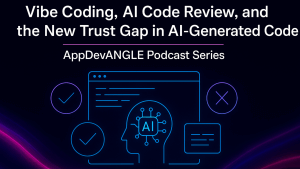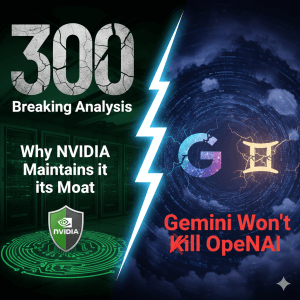The enterprise IT landscape is once again at an inflection point. For years, organizations have pursued automation and orchestration as a means to accelerate operations, enhance productivity, and mitigate the risks associated with manual processes. Now, the emergence of agentic AI, with intelligent, autonomous agents capable of reasoning and acting on infrastructure, offers the potential to transform IT operations more fundamentally than any prior wave of automation.
In a recent AnalystANGLE discussion, we spoke with Chris Wade, co-founder and CTO of Itential, about how enterprises can move beyond automation toward an agentic model of infrastructure management. The conversation highlighted not only the opportunities of agentic AI but also the critical need for security, guardrails, and governance as enterprises adopt these new capabilities.
From Fixed Workflows to Reasoned Workflows
Traditional infrastructure automation has largely been a matter of building fixed workflows. These workflows, often brittle and rigid, follow pre-defined logic paths that don’t easily adapt to unexpected circumstances. According to Wade, agentic AI promises to shift this paradigm toward reasoned workflows, where agents can assess context, weigh options, and make informed decisions about how to execute tasks.
For example, rather than following a step-by-step upgrade script, an AI-driven agent could dynamically evaluate the state of the network, consider dependencies, and determine the safest and most efficient sequence of actions. This reasoning capability accelerates time-to-change, enabling IT teams to support increasingly complex business demands.
Importantly, as organizations mature in their use of AI, the value moves beyond productivity. Initially, AI helps teams accomplish tasks more efficiently. Over time, the real value lies in freeing IT professionals to focus on strategic initiatives, modernization, customer experience improvements, and revenue-driving projects, rather than repetitive maintenance tasks.
Building on the Foundation of Automation and Orchestration
Itential has spent years developing a platform for infrastructure automation and orchestration. This experience provides a strong foundation for enabling agentic AI. Earlier this year, Itential launched its NCP (Network Control Plane) server, designed to securely expose infrastructure capabilities to large language models (LLMs) and agents.
The concept is akin to Google Maps’ API tokens, developers can access specific capabilities with built-in limits and safeguards. In Itential’s case, enterprises can expose elements of their infrastructure to AI agents while applying role-based access control (RBAC), guardrails, and oversight.
This approach acknowledges a dual reality:
- On one hand, enterprises want to harness innovation by empowering AI agents to act.
- On the other hand, they need to maintain control to ensure these agents don’t inadvertently compromise security or stability.
In the short term, many use cases remain focused on assurance—reading infrastructure states, collecting telemetry, and presenting insights. But as AI begins to handle provisioning and configuration management, security and governance will become central requirements.
Micro Apps, Vibe Coding, and the Democratization of Infrastructure
One of the more intriguing developments in AI’s evolution is the rise of micro apps and vibe coding. These are small, targeted applications that AI can generate rapidly to solve specific problems. Wade noted that AI excels at creating lightweight applications, often in hours or days, that provide immediate value to teams such as network operations centers or application owners.
This democratization of infrastructure management marks a departure from earlier trends where network engineers were expected to become full-scale developers. Instead, AI enables teams to quickly build tailored tools without needing deep coding expertise. The challenge then becomes securely connecting these applications to infrastructure, a role that platforms like Itential are well-positioned to fill.
Human in the Loop: A Pragmatic Approach
While the vision of fully autonomous infrastructure is compelling, the reality is that enterprises will move cautiously. Wade emphasized the enduring importance of the human-in-the-loop model.Especially for complex or high-risk changes, IT leaders will insist on oversight to ensure compliance, security, and reliability.
Over time, as AI systems prove their reliability and enterprises provide them with richer contextual data, the proportion of automated changes is expected to grow. The transition will likely follow a familiar pattern: starting with routine, low-risk tasks, validating AI-driven actions, and then expanding automation into more strategic and complex areas.
Customer Use Cases: From Visualization to Agent-Building
Wade described three categories of customer adoption:
- Getting Started: Organizations begin with visualization and data collection, often replacing legacy BI-style dashboards with AI-driven interfaces.
- Mid-Stage: Teams replace static workflows with AI-driven reasoning, allowing agents to sequence operations dynamically.
- Advanced: Enterprises begin building dedicated agents for tasks such as monitoring, provisioning, and configuration management.
The common outcome across these stages? Speed. Customers are experiencing faster change velocity, which directly correlates with operational value. In many cases, teams are accomplishing tasks that were not feasible with human labor alone, such as validating every configuration element or continuously auditing compliance across large environments.
Preparing for the Agentic Future
Looking ahead three to five years, Wade envisions Itential serving as the execution layer that connects centralized AI reasoning with highly distributed infrastructure. With AI development centralized around foundational models, enterprises will need distributed platforms to apply that intelligence securely to their networks, clouds, and data centers.
For enterprises just starting out, the advice is clear:
- Prioritize programmability. Infrastructure must be accessible via APIs to leverage the benefits of AI.
- Adopt automation and orchestration. These remain prerequisites for agentic capabilities.
- Lean in now. The pace of change is rapid, and those who prepare their infrastructure today will be positioned to capitalize on AI’s benefits tomorrow.
OurANGLE
Agentic AI represents more than another incremental improvement in IT operations. It’s a fundamental rethinking of how infrastructure is managed. Just as virtualization and cloud redefined operating models, agentic AI has the potential to reshape the day-to-day reality of IT teams.
Yet, adoption will not be without challenges. Security, governance, and cultural readiness will all play critical roles. Enterprises must strike a balance between embracing innovation and ensuring robust controls.
The winners in this transition will be those organizations that not only adopt AI agents but also reimagine their operational models: moving from rigid processes to adaptive reasoning, from human bottlenecks to machine-driven acceleration, and from tactical firefighting to strategic enablement.
As Wade observed, this is a rare moment in IT where technology enables organizations to truly reconsider what is possible. Enterprises that seize the opportunity will be better equipped to operate infrastructure at scale, deliver business agility, and secure their environments in an increasingly complex digital landscape.
For more information on Itential solutions, please visit their website.



